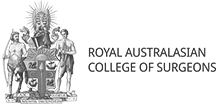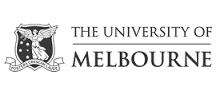ACL Reconstruction
The anterior cruciate ligament (ACL) is a ligament in the centre of the knee that attaches to the femur (thigh bone) and tibia (shin bone). It prevents the tibia from sliding forward or twisting relative to the femur. Rupture of the ACL is a common knee injury and can be caused by twisting, a direct blow to the knee, or landing incorrectly after jumping. It is not uncommon for other structures in the knee such as the cartilage or other ligaments to be injured when the ACL ruptures and these may also need to be treated.
After an ACL rupture, there may be ongoing problems, with the knee giving way or feeling unstable. This instability commonly prevents a return to sport and, if severe, can cause difficulty during day to day activities. It also predisposes the knee to further damage to the meniscus cartilage and joint surfaces.
Treatment
Initial Treatment
The initial treatment consists of RICE (rest, ice, compression and elevation). See your GP as soon as possible to have your knee assessed and to organize appropriate imaging.
Physiotherapy can also be useful to decrease swelling and regain strength and movement in the knee.
Surgery
Surgical treatment (ACL reconstruction) involves creating a new ligament using a graft. The procedure is performed arthroscopically. The graft can be made from hamstring tendons from the back of the thigh, or part of the quadriceps tendon or patella tendon from the front of the knee.
Once a graft has been prepared, tunnels are then drilled through the femur and tibia. The positions of the tunnels are critical because they determine the final position and orientation of the ACL graft. The graft is inserted into the tunnels and is held in place with buttons or screws.
For some patients, an additional procedure can be performed at the same time to further stabilize the knee. The Lateral Extra-Articular Tenodesis (LEAT) uses part of the iliotibial band (ITB) to tighten up the outer side of the knee, which adds another restraint to the knee.
Any other damaged structures in the knee can be assessed and treated at the time of the reconstruction. Tears of the meniscus can be repaired and loose bodies can be removed.








